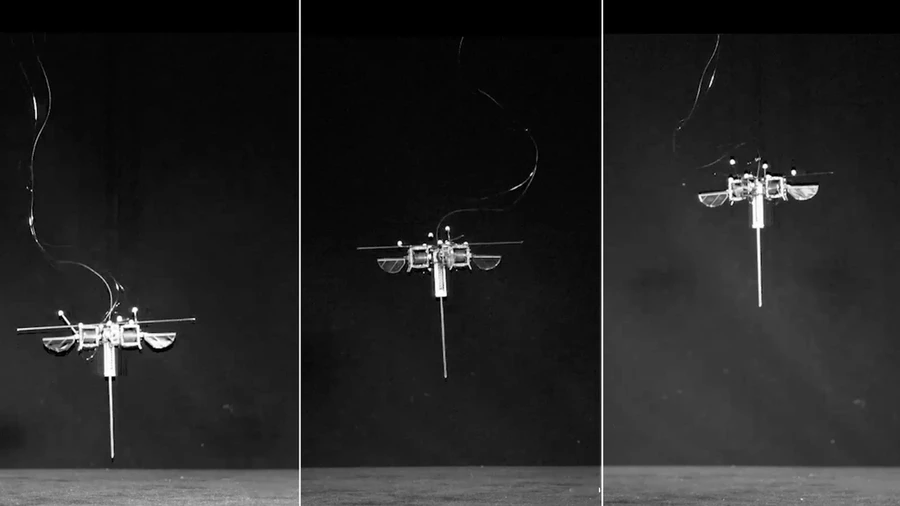Flying robots have some big advantages over their ground-going counterparts, but they're definitely not very energy-efficient. An experimental new bot addresses that tradeoff by using a wing-assisted mechanism to hop instead of walking or flying in the traditional sense.
Developed by a team of scientists from MIT, the University of Hong Kong and the City University of Hong Kong (which previously brought us the Hopcopter), the bot weighs less than 1 gram and stands a little over 5 cm (2 in) tall.
It's equipped with a vertically oriented spring-loaded carbon fiber rod which functions as a pogo-stick-like hopping leg. At the top of its body are four insect-inspired flapping wings that are moved by electrically activated artificial muscles. In its current form, the robot is hardwired to an external power source and guided by an external motion-tracking system.

When the bot is first dropped onto the ground, its leg-spring gets compressed on impact, storing energy.
That energy is then released as the spring rebounds, propelling the robot up into the air. Its wings beat to provide extra lift, allowing it to hop as high as 20 cm (7.9 in) while moving laterally at up to 30 cm (11.8 in) per second. That said, it still uses far less power than it would if the wings were actually holding it aloft.
At the apex of the hop, the motion-tracking system identifies the robot's next landing spot, identifying its angle and terrain type. A control algorithm on a linked computer then calculates the speed and angle at which the bot will have to land on that spot in order to successfully execute its next hop.
The wings are thus used to adjust its orientation as it descends, in order to ensure that those criteria are met.
In this fashion, the robot is easily able to make its way over obstacles, and traverse multiple types of rough and/or slanted terrain that would stymie wheeled or walking robots. It has so far successfully made its way over grass, ice, wet glass, uneven soil, and even a dynamically tilting flat board.
At the same time, though, tests have shown that the bot uses 64% less energy than a conventional drone-type robot would use to fly over the same distance.
Because the robot is so energy-efficient, the scientists now plan on equipping it with its own onboard battery and motion-tracking system. It could also be loaded up with additional sensors that may one day be used in tasks such as searching for survivors at disaster sites, or exploring hazardous environments.
A paper on the research – which was led by Yi-Hsuan Hsiao, Songnan Bai and Zhongtao Guan – was recently published in the journal Science Advances. You can see the device doing the hop, in the video below.
Source: MIT




